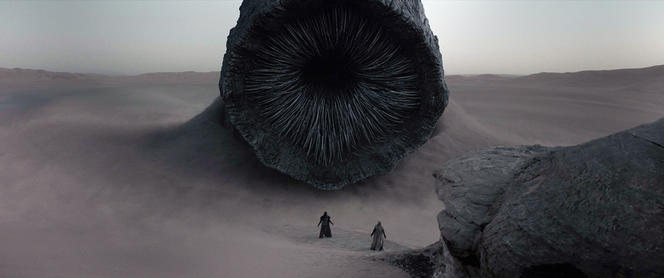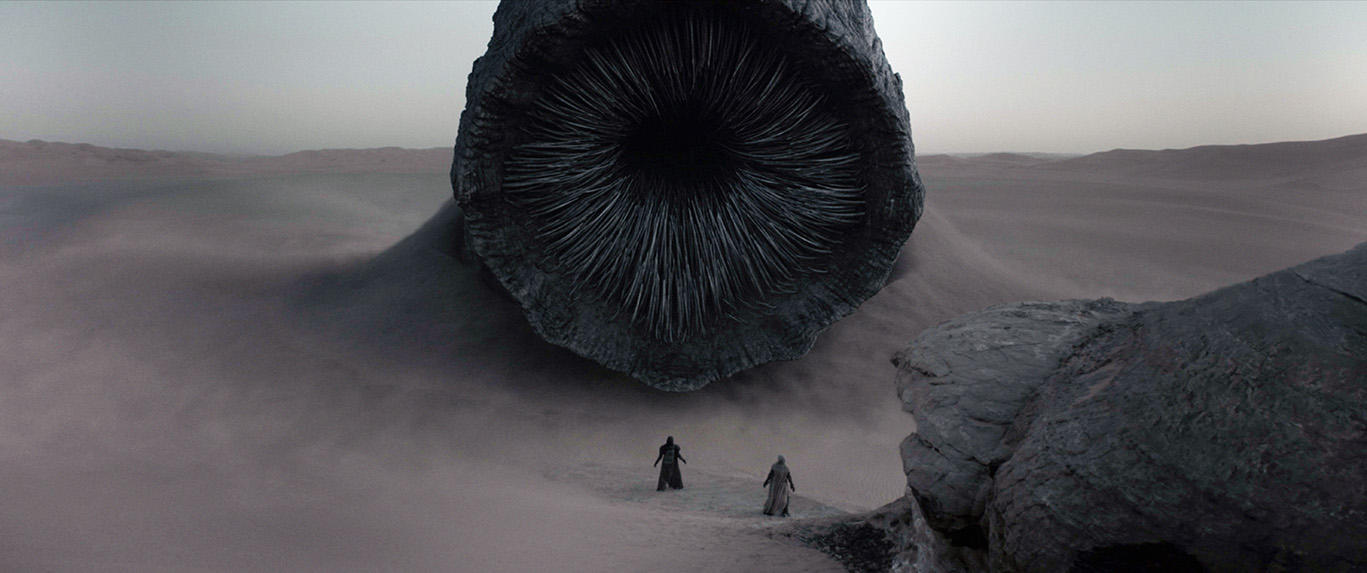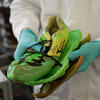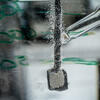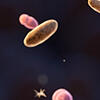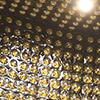You are here
Dissecting the “spice” of Dune

What is your connection to Dune?
Fabrice Chemla:1 I’m a fan of the eponymous novel, originally published in 1965 by the American author Frank Herbert,2 and later adapted as a film. When I was 17, I was awestruck by the cover of the 1980 paperback edition, which shows a face with entrancing deep blue eyes. That cover became hugely famous in the science fiction world. At the time, I was totally enthralled by the Dune saga. More recently, in an attempt as a chemist to identify real-life analogues of Herbert’s mysterious fictional substance, I carried out a sort of study, compiling all the hints dropped by the author about the physical appearance and properties of “spice”. This exercise resulted in a series of articles appearing in several journals.3 The most recent one, published by CNRS Éditions, will be presented to the press at the Maison de la Chimie in Paris on 29 September.
What exactly is spice?
F. C.: It’s one of the central elements of the Dune saga, which takes place in an interstellar empire in the very distant future. Produced only on the planet Dune and consumed by the “Spacing Guild Navigators” starting in childhood, spice is endowed with several miraculous properties. First of all, it has an anti-ageing effect that triples life expectancy. It is also nootropic, which means that it increases mental acuity. Lastly, it has hallucinogenic and entheogenic properties (inducing divine inspiration) that make it possible to predict the future and thus detect and avoid potentially fatal obstacles in hyperspace, a fictional means of transportation that the Navigators use to carry out interstellar or intergalactic journeys on a human time scale.
What does the novel say about the chemical composition and characteristics of spice?
F. C.: In fact, no specific chemical structures or substances are named in the book. With good reason: Frank Herbert was not a chemist! On the other hand, he mentions that it is a “melange”, another name for spice, produced by fermenting sandworm castings, an imaginary creature endemic to the planet Dune. He also says that spice is solid, that it smells like cinnamon, and that its colour changes depending on the environment (blue, purple or reddish brown).
What does your chemical knowledge allow you to infer from these hints?
F. C.: First of all, the fact that spice is a “melange”, or blend, indicates that it is likely to be a compound of several molecules and not just one. Secondly, its cinnamon-like fragrance points to the presence of cinnamaldehyde (trans-cinnamaldehyde, with the chemical formula C9H8O), a substance found in essential oil of cinnamon. Its changing colour would seem to suggest that spice contains a natural pigment of the anthocyanin family, naturally present in many of our purple, red and brown vegetables (eggplant, muscat grapes, blueberries, blackcurrants, etc.). These compounds’ colour varies depending on their level of acidity, or pH:4 red when the pH is acidic, purple when it’s alkaline, etc. Based on existing chemical knowledge, spice could contain cinnamaldehyde and anthocyanin.
What could owe spice its anti-ageing effect?
F. C.:Several earthly substances could have this benefit – including anthocyanins! In fact, they belong to a class of compounds called flavonoids, which are known for protecting cells against harmful free radicals (an antioxidant effect) and thus against cellular ageing. In the current state of knowledge, flavonoids cannot actually slow the ageing of the body, but one could imagine that spice contains an anthocyanin whose exceptional structure would allow it to exert such an effect and thus extend life expectancy.
And what about its remarkable cognitive properties?
F. C.: Regarding its ability to enhance mental acuity, many common substances are known to have that type of effect, including coffee, tea and chocolate. But I can’t propose a specific analogue here because, unfortunately, there isn’t enough information on this aspect in the book. Concerning its hallucinogenic and entheogenic properties, all the descriptions in the Dune saga make it possible to draw a parallel with various real-life hallucinogenic psychotropic drugs, which by definition are capable of altering the perception of reality and inducing hallucinations.
Which ones exactly?
F. C.:Some of them are natural substances that are illegal in France but traditionally used in certain cultures for religious or mystical practices, for example to commune with the spirits. Psilocybin, for instance, is derived from hallucinogenic mushrooms of the Psilocybe genus, and is popular with the Aztecs in Mexico. I could also mention DMT (N,N-dimethyltryptamine), which is present in ayahuasca, an age-old hallucinogenic drink made from vines of the Banisteriopsis genus and consumed by a number of indigenous Amazonian tribes. Then there’s ibogaine, an extract of the Gabonese plant iboga (Tabernanthe iboga). But the hallucinogenic and entheogenic effects of spice could also be caused by an analogue of a man-made substance, also banned in France: lysergic acid diethylamide, or LSD.
What is the mechanism by which these substances bring on hallucinations?
F. C.: Through a chemical structural motif called tryptamine (C10H12N2) contained in all of these compounds. It is also found in a key neurotransmitter involved in mood regulation (happiness, depression, etc.): serotonin. Tryptamine allows serotonin to activate its specific receptors on the surface of the neurons. Since all of the above-mentioned hallucinogenic substances also have a tryptamine motif, they can bind to the brain’s serotonin receptors. When that happens, they can alter not only mood (which is why some of these hallucinogens are now being tested as a treatment for severe depression), but also – and most importantly – states of consciousness. This is what causes the hallucinations that take place when they are consumed, recalling those induced by spice in Dune.
- 1. A researcher at the Parisian Institute for Molecular Chemistry, (IPCM – CNRS / Sorbonne Université).
- 2. A new French edition of Frank Herbert’s novel Dune was released by Robert Laffont in October 2020.
- 3. “Dune – Exploration scientifique et culturelle d’une planète-univers”, Le Bélial, October 2020. “Dune – Le MOOK”, L’Atalante & Leha, November 2020. “Etonnante chimie: 80 chercheuses et chercheurs racontent l’inattendu”, CNRS Éditions, April 2021.
- 4. “Potential of hydrogen”, or pH, is a measurement on a scale of 0 to 14 of the chemical activity of hydrogen ions (H+). In an aqueous medium at 25°C, a solution is neutral if its pH is 7, acidic if the figure is lower, and alkaline if it is higher.
Explore more
Author
A freelance science journalist for ten years, Kheira Bettayeb specializes in the fields of medicine, biology, neuroscience, zoology, astronomy, physics and technology. She writes primarily for prominent national (France) magazines.


